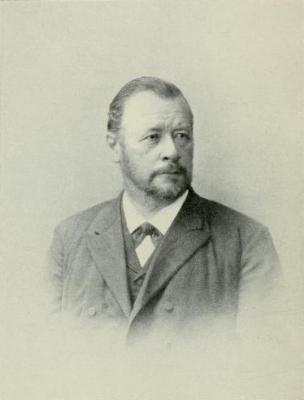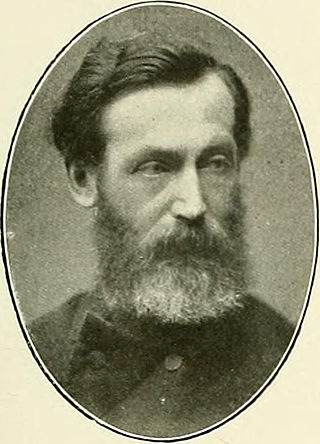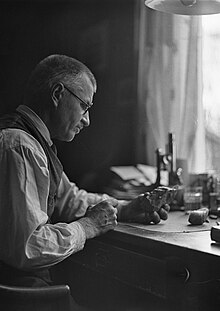
Karl Fritsch was an Austrian botanist. He was born in Vienna and educated mainly at the University of Vienna, obtaining his PhD degree in 1886 and his Habilitation in 1890. In 1900 he moved to the University of Graz as professor of Systematic Botany, where he built up the botanical institute. In 1910 he was appointed as director of the university's botanical garden, and in 1916 the new institute acquired its own building. He continued at Graz for the rest of his career, and died there.

Karl Wilhelm Gottlieb Leopold Fuckel was a German botanist who worked largely on fungi.

Kaarlo Linkola was a Finnish botanist and phytogeographer.
Viktor Ferdinand Brotherus was a Finnish botanist who studied the mosses (Bryophyta). He is best known for authoring the treatment of 'Musci' in Engler and Prantl's Die Naturlichen Pflanzenfamilien.

Max Britzelmayr was a German mycologist and lichenologist who was a native of Augsburg.

Friedrich Gottlieb Bartling was a German botanist who was a native of Hanover.

Ferdinand Christian Gustav Arnold was a German lichenologist and taxonomist born in Ansbach, Bavaria. Even as a high school student he showed an active interest in botany: "Ich und August Gattinger ... durchstreiften von November 1846 bis zum Spätherbst 1847, Pflanzen sammelnd, die Landschaft von München nach allen Richtungen.".
Aino Marjatta Henssen, was a German lichenologist and systematist. Her father, Gottfried Henssen, was a folklorist and her mother was Finnish.
Paul Sydow was a German mycologist and lichenologist, father of Hans Sydow (1879–1946).

Alexander Zahlbruckner was an Austrian-Hungarian botanist who specialized in the study of lichens. Johann Babtist Zahlbruckner, an earlier Austrian botanist, was his grandfather.

Ernst Stizenberger was a German physician and lichenologist.
Camille Torrend (1875-1961) was a Portuguese clergyman and mycologist. He was active in France, Portugal, Ireland and Brazil. He was a professor of botany and phytopathology at the Imperial Agricultural School of Bahia. Torrend edited the exsiccata Fungi selecti exsiccati.
Jan-Peter Frahm was a German botanist dedicated to the study of mosses. The standard author abbreviation J.-P.Frahm is used to indicate this person as the author when citing a botanical name.

Edvard August Vainio was a Finnish lichenologist. His early works on the lichens of Lapland, his three-volume monograph on the lichen genus Cladonia, and, in particular, his study of the classification and form and structure of lichens in Brazil, made Vainio renowned internationally in the field of lichenology.
Rainar Alarik Hakulinen was a Finnish lichenologist and schoolteacher. He was noted as an expert on the lichen family Candelariaceae, and was known for his numerous phytogeographical publications about the boreal and arctic lichens of Finland, Northern Norway, and Russian Karelia.
Josef Nádvorník was a Czech lichenologist. He was an authority on lichens of the order Caliciales and, in particular, the genus Physcia.

Johan Petter Norrlin was a Finnish botanist and a professor of botany at the University of Helsinki from 1879 to 1903. He was a pioneer of plant geography in Finland, and is also well known for his work on lichens and on the taxonomy of the apomictic taxa of the plant genera Hieracium and Pilosella.
Klára Anna Verseghy was a Hungarian lichenologist. She was the curator of the lichen collection of the Hungarian Natural History Museum in Budapest from 1958 to 1985.

Exsiccata is a work with "published, uniform, numbered set[s] of preserved specimens distributed with printed labels". Typically, exsiccatae are numbered collections of dried herbarium specimens or preserved biological samples published in several duplicate sets with a common theme or title, such as Lichenes Helvetici. Exsiccatae are regarded as scientific contributions of the editor(s) with characteristics from the library world and features from the herbarium world. Exsiccatae works represent a special method of scholarly communication. The text in the printed matters/published booklets is basically a list of labels (schedae) with information on each single numbered exsiccatal unit. Extensions of the concept occur.
Zygmunt Robert Tobolewski was a distinguished Polish lichenologist and professor at the Adam Mickiewicz University in Poznań. He graduated from the Faculty of Mathematical and Biological Sciences at the University of Poznań in 1950, earned his Ph.D. in 1960, and became a full professor in 1982. Tobolewski made significant contributions to the study of Polish lichens, focusing on regions such as the Carpathian Mountains, the Sudetes, and the northwestern and northeastern parts of Poland. He served as the president of the Lichenological Section of the Polish Botanical Society and edited notable works like Lichenotheca Polonica and the Atlas of Geographical Distribution of Spore-Plants in Poland (Lichenes). His influential publications include The Family Caliciaceae (Lichenes) in Poland and Polish Lichens, co-authored with Janusz Stanisław Nowak. Tobolewski was respected for his profound knowledge, dedication to science, and his role in educating and mentoring a generation of lichenologists in Poland.











